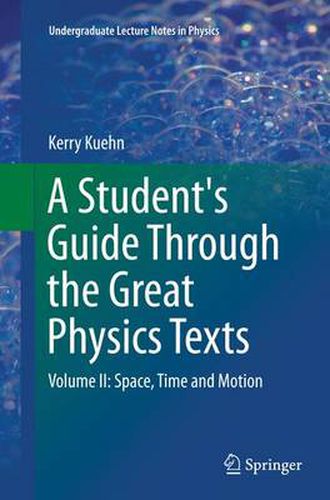Readings Newsletter
Become a Readings Member to make your shopping experience even easier.
Sign in or sign up for free!
You’re not far away from qualifying for FREE standard shipping within Australia
You’ve qualified for FREE standard shipping within Australia
The cart is loading…






This title is printed to order. This book may have been self-published. If so, we cannot guarantee the quality of the content. In the main most books will have gone through the editing process however some may not. We therefore suggest that you be aware of this before ordering this book. If in doubt check either the author or publisher’s details as we are unable to accept any returns unless they are faulty. Please contact us if you have any questions.
This book provides a chronological introduction to the science of motion and rest based on the reading and analysis of significant portions of Galileo’s Dialogues Concerning Two New Sciences, Pascal’s Treatise on the Equilibrium of Fluids and the Weight of the Mass of Air, Newton’s Mathematical Principles of Natural Philosophy, and Einstein’s Relativity.
Each chapter begins with a short introduction followed by a reading selection. Carefully crafted study questions draw out key points in the text and focus the reader’s attention on the author’s methods, analysis, and conclusions. Numerical and laboratory exercises at the end of each chapter test the reader’s ability to understand and apply key concepts from the text.
Space, Time and Motion is the second of four volumes in A Student’s Guide through the Great Physics Texts. This book grew out of a four-semester undergraduate physics curriculum designed to encourage a critical and circumspect approach to natural science, while at the same time preparing students for advanced coursework in physics.
This book is particularly suitable as a college-level textbook for students of the natural sciences, history or philosophy. It also serves as a textbook for advanced high-school students, or as a thematically-organized source-book for scholars and motivated lay-readers. In studying the classic scientific texts included herein, the reader will be drawn toward a lifetime of contemplation.
$9.00 standard shipping within Australia
FREE standard shipping within Australia for orders over $100.00
Express & International shipping calculated at checkout
This title is printed to order. This book may have been self-published. If so, we cannot guarantee the quality of the content. In the main most books will have gone through the editing process however some may not. We therefore suggest that you be aware of this before ordering this book. If in doubt check either the author or publisher’s details as we are unable to accept any returns unless they are faulty. Please contact us if you have any questions.
This book provides a chronological introduction to the science of motion and rest based on the reading and analysis of significant portions of Galileo’s Dialogues Concerning Two New Sciences, Pascal’s Treatise on the Equilibrium of Fluids and the Weight of the Mass of Air, Newton’s Mathematical Principles of Natural Philosophy, and Einstein’s Relativity.
Each chapter begins with a short introduction followed by a reading selection. Carefully crafted study questions draw out key points in the text and focus the reader’s attention on the author’s methods, analysis, and conclusions. Numerical and laboratory exercises at the end of each chapter test the reader’s ability to understand and apply key concepts from the text.
Space, Time and Motion is the second of four volumes in A Student’s Guide through the Great Physics Texts. This book grew out of a four-semester undergraduate physics curriculum designed to encourage a critical and circumspect approach to natural science, while at the same time preparing students for advanced coursework in physics.
This book is particularly suitable as a college-level textbook for students of the natural sciences, history or philosophy. It also serves as a textbook for advanced high-school students, or as a thematically-organized source-book for scholars and motivated lay-readers. In studying the classic scientific texts included herein, the reader will be drawn toward a lifetime of contemplation.